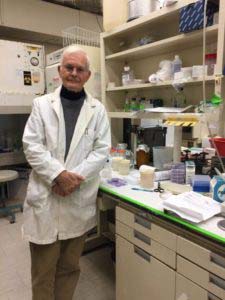On Friday, Jan. 20, about 900,000 people are expected to be gathered on the National Mall in Washington, D.C. to witness Donald Trump being sworn in as the nation’s 45th president.
Among the crowd of thousands will be selected future leaders from schools across the country, including James Moore, a sophomore at Ward Melville High School, who will represent Long Island in a five-day program surrounding the historic event.
The Presidential Inauguration Leadership Summit, held between Jan. 18 and 22, gives students like James the opportunity to take part in a series of workshops, seminar discussions and presentations that coincide with the inauguration, listen to world-renowned speakers — some of this year’s honored guests include General Colin Powell, the youngest-ever Nobel Laureate Malala Yousafzai via video satellite, renowned filmmaker Spike Lee, former governor of Maryland Martin O’Malley (D) and Fox News commentator Tucker Carlson — and gain a perspective on local, national and global issues facing their generation.

James was invited to participate in the exclusive experience as an alumnus of the Junior National Young Leaders Conference, which he was chosen to join by his elementary school teacher when he was entering seventh grade.
He served on the student council and Junior Honor Society while at Gelinas Junior High in East Setauket, received Triple C Award upon graduating sixth grade for demonstrating outstanding “Courage, Character, and Commitment throughout the school,” has volunteered at Island Harvest packaging food for the homeless and received the New York State Scholar-Athlete Team Award in 2015 as a varsity-level track runner who maintained a GPA of 90 percent or better during the season.
Additionally, James volunteers at Setauket Presbyterian Church by helping to teach Sunday school.
“Being part of history is a big part of why I wanted to go,” James said in an interview. “I’m looking forward to hearing the other side of politics, how people are seeing things from around the country, and just getting to be with people who are similar to me … it’s cool to be able to think and be part of this [moment] together.”
He said the 2016 presidential election was “surprising” and “interesting to watch.”
“I remember waking up after the election was over going ‘wow, that happened?’” he said. “[But] I’m not upset with it and I’m not going to go out and complain about it but it threw me off.”
While he said he’s excited about learning more about the political process, and hearing Yousafzai’s speak in particular, the 15-year-old from Setauket is no stranger to interacting with major politicians and voicing his thoughts on social, environmental and community issues in public forums.
In fact, as the son of two presidents of major defense and trade manufacturing companies on Long Island whose event guest lists frequently include Hillary and Bill Clinton, James has been politically engaged practically since birth.
“He’s met Bill and Hillary a few times, Congressman Steve Israel, Congressman Tim Bishop; he’s met these folks and he’s very confident and comfortable in speaking with people in leadership roles,” his mother, GSE Dynamics President Anne Shybunko-Moore, said. “James has grown up in a very aware environment … because of what I do, we’re always watching the news and talking about the issues.”
“I remember waking up after the election was over going ‘wow, that happened?’”
— James Moore
James even participated in Hillary Clinton’s campaign last February and is interested in an internship position at Assemblyman Steve Englebright’s (D-Setauket) office.
His mother said her son has a “sincere realness” that makes him a natural leader.
“He’s always been very thoughtful,” she said. “He’ll see a situation and be like ‘what can I do to help or change that?’ That’s just who he is.”
James’ father, Manufacturing Consortium of Long Island President Jamie Moore, said he hopes his son gets a “fire lit” and obtains an understanding of what he can do with his life from his experience in Washington.
“I see so many of these kids just kind of floating through, and playing Pokemon Go or whatever, and there are so many opportunities they could be doing to increase their knowledge, help out other people, help other communities and this is one of those things that will hopefully help open his eyes and give him some ideas,” he said. “We try to craft that by giving him enough experiences to get out there and try new things.”
While in D.C., James said he’ll be following his program itinerary by day and studying for his school midterms by night.








 The event, which gives audiences a chance to see Debbie Reynolds in her breakout role and Gene Kelly at the pinnacle of his career, also includes exclusive commentary from Turner Classic Movies host Ben Mankiewicz, who will give insight into this classic film. Starring Reynolds, Kelly, Donald O’Connor, Jean Hagen, Cyd Charisse and Rita Moreno, the 1952 classic is still as fresh and delightful as the day it was released.
The event, which gives audiences a chance to see Debbie Reynolds in her breakout role and Gene Kelly at the pinnacle of his career, also includes exclusive commentary from Turner Classic Movies host Ben Mankiewicz, who will give insight into this classic film. Starring Reynolds, Kelly, Donald O’Connor, Jean Hagen, Cyd Charisse and Rita Moreno, the 1952 classic is still as fresh and delightful as the day it was released.


















